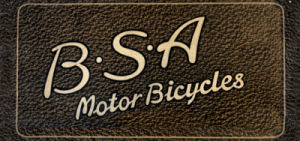

The 9.86 h.p. De Luxe machine has been expressly designed for sidecar work with heavy loads. For high speeds or in difficult country, the extra power given by the larger engine adds materially to the average road performance. Its flexibility, economical upkeep, and the extremely small space required for garaging, are features which are overwhelmingly in its favour when it is compared with the modem light car.
Engine.
Twin-cylinder, 9.86 h.p. (986 c.c.), 80 mm. x 98 mm. bore and stroke. Mainshaft mounted on ball bearings. Improved design of piston, connecting rods, and big-end bearing giving greater strength, longer wearing qualities, and reducing vibration. Aluminium alloy pistons.
Silencer.
Large capacity of efficient design, with outlet
pipe carried well to the rear.
Carburettor.
Amac carburettor. A special carburettor
fitted with air filter can be fitted as an extra.
Ignition.
Magneto driven by adjustable chain in dust-proof
case.
Lubrication.
Gravity feed to mechanical pump, then to sight feed on tank, and feeding to crankcase. Hand pump is also fitted for emergency use. Oil is supplied to front chain by depressing spring by-pass valve on timing case. Hubs, fork links, etc., fitted with grease-gun nipples.
Transmission.
5/8 in. x 3/8 in. roller chains front and rear. Front drive completely enclosed in chain case, rear drive protected by an efficient guard. Cast aluminium chain cases extra. Cam-faced cush drive fitted to engine shaft. For gear ratios, see page 70.[1]
Clutch and Gear-box.
Contained in large chain wheel.
Floating dry-plate type, indestructible. Controlled by lever on
left of handlebar with large diameter cable. B.S.A. three-speed
gear-box. All gears constantly in mesh and increased in width to give additional strength. Kick-starter mechanism enclosed in
gear-box. Screw adjustment of box position for accurately
setting chain tension. The change-speed lever is on right side
of tank.
Frame.
Specially designed for sidecar work, with integral
sidecar lugs. Head fitted with B.S.A. steering damper. Weld-
less steel tubing and forged steel lugs are used throughout. Head
lug of continuous type giving great strength. Strong carrier
fitted.
Spring Fork and Handlebar.
B.S.A. wide type spring
fork fitted with barrel spring and shock absorbers. Touring or
sporting pattern handlebar, both types adjustable.
Tank.
Supported by brackets brazed on to the frame. Filler
caps unleakable, secured with, bayonet joint and chain. Combined priming cock and petrol tap. Capacity: petrol, 2½ gals., oil, 3 pints.

1929 model is very similar to the Colonial 9.86hp of the previous year.
BSA G29 W.T. 1000cc Specification
Wheels and Tyres.
Wheels: heavy gauge rims, 19 in. x 3 in., enamelled. Quickly detachable and
interchangeable. Taper roller bearings to hubs. Dunlop cord tyres, 26 in. x 3.25 in, wired-on, or
27 in. x 4 in. wired-on balloon tyres can be fitted at an extra charge.
Brakes.
Both internal expanding type, 7 in. diameter. Front operated by lever on right handlebar, rear by heel pedal on right side of machine. Grease-gun nipples fitted to the cam spindles.
Saddle.
Terry spring seat, De Luxe type. Brooks. supple
seat B.190/2, if specified.
Mudguards.
Rear, strong and 7 in. wide of plain section.
Front mudguard of ample dimensions.
Footboards.
Pyramid rubber covered, set at a comfortable
angle.
Stands.
Back kick-up; Front stand rigidly secured to
guard.
Tool-box.
Metal case. Complete set of tools in neat roll,
and grease-gun. An inflator is provided.
Finish.
Tank in usual B.S.A. colours. Black enamel and
bright parts heavily plated.
Notes
1. More pages from this book are available at Craig Howell's Flickr pages. Craig Howell
Source: Book of the BSA by Waysider. Pitmans, 1928.